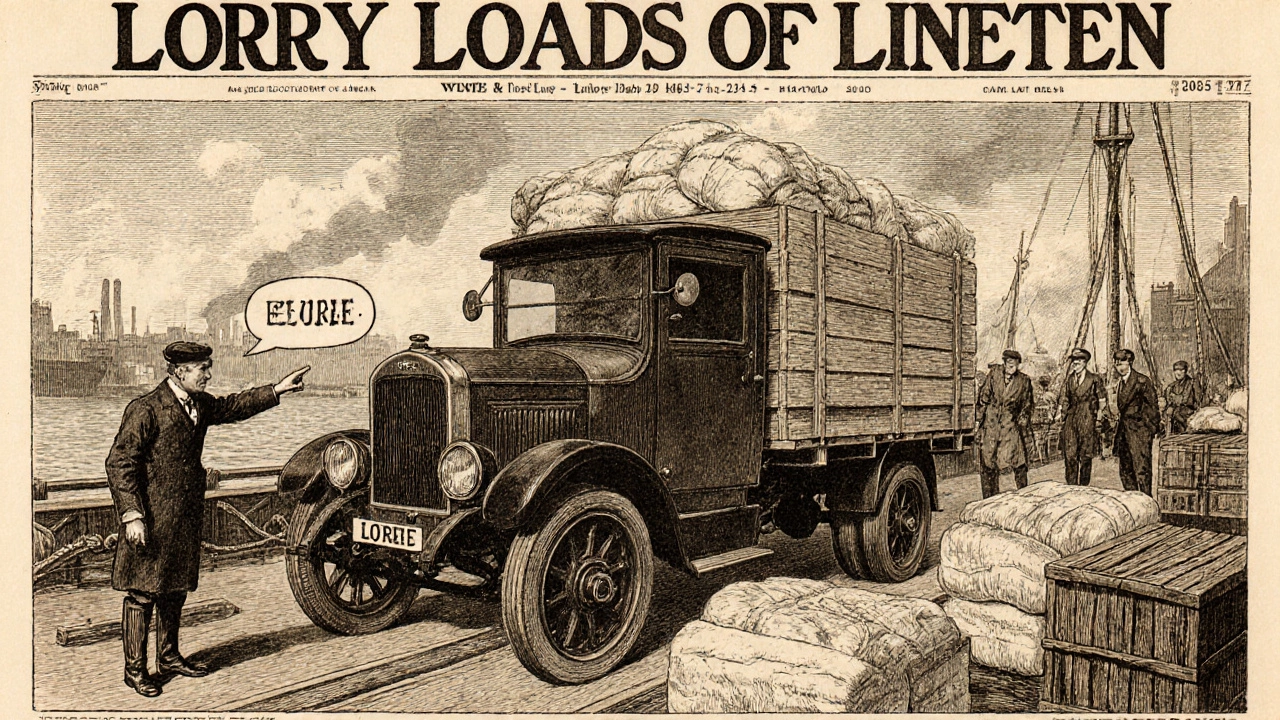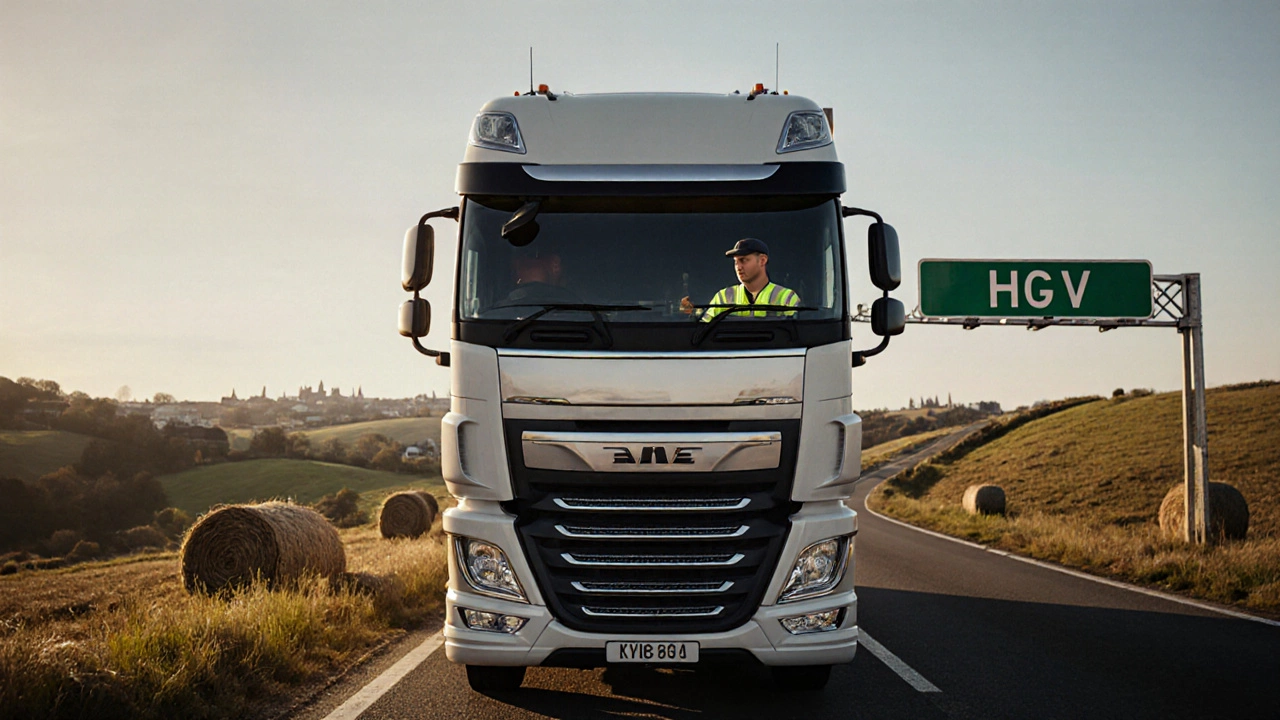Ever wondered why the person behind a massive white cab in the UK is called a lorry driver instead of a truck driver? The answer lies in a mix of language history, industrial change, and a dash of British pride.
Key Takeaways
- The word “lorry” entered British English in the late 19thcentury, borrowed from Irish slang.
- “Lorry driver” became the standard term as motor‑hauling replaced horse‑drawn wagons.
- In the United States the same job is called a “truck driver,” reflecting different vehicle naming.
- Modern regulations (HGV licensing, road‑haulage rules) still use the term “lorry” in official UK documents.
- Understanding the etymology helps learners of British English and anyone working in transport communications.
What Exactly Is a Lorry?
Lorry is a large motor vehicle designed for transporting goods, typically with a separate driver’s cab and cargo area. The term first appeared in print around 1896, traced back to the Irish word lorrie meaning “a large, bulky object.”
When railways and canals gave way to road haulage, the new motor‑vehicles inherited the name. By the 1920s the British press regularly described freight fleets as “lorry fleets,” and the public caught on.
Who Is the Lorry Driver?
Lorry driver is a professional who operates a lorry, holding the appropriate Heavy Goods Vehicle (HGV) licence and complying with road‑safety regulations.
In everyday speech the role overlaps with “truck driver,” but the UK’s licensing body (DVLA) still lists the occupation under “lorry driver” in official statistics and training curricula.
Why the Word “Lorry” Gained Traction in Britain
The late‑1800s saw a boom in motor vehicle invention. Manufacturers needed a word that distinguished cargo‑cars from the passenger‑focused “car” or “motor‑carriage.” Irish immigrants in Liverpool and Glasgow used “lorrie” to describe the hefty freight wagons they saw on the docks. The term slipped into railway jargon and, when motorised vehicles arrived, it stuck.
British newspapers loved the alliteration-“LorryLoadsofLinen”-and advertisers quickly adopted it. By the time the first HGV licences were issued in the 1930s, “lorry driver” was already entrenched.

How the US Went the “Truck” Route
Across the Atlantic, the word “truck” had a different origin. It comes from the Old French “troque,” meaning “to barter,” which evolved into “truck” as a term for a small cart used in markets. When motorised freight vehicles appeared in the United States, the existing term was simply extended.
Consequently, the American vehicle is called a “truck” and its operator a “truck driver.” The divergence is purely linguistic; the jobs are technically identical, both subject to similar safety standards like hours‑of‑service rules.
Regulatory Language: Why “Lorry” Still Matters
British transport law still uses “lorry” in several key documents:
- Road Haulage Act 1975 outlines the duties of lorry operators.
- The Driver CPC (Certificate of Professional Competence) exam refers to “lorry driver” throughout its modules.
- DVLA’s licensing tables list “Category C - lorry” as the licence needed for vehicles over 3.5tonnes.
Because the law is precise, the term persists in training courses, insurance policies, and fleet management software.
Comparing British and American Terminology
| Aspect | UK Term | US Term |
|---|---|---|
| Vehicle | Lorry | Truck |
| Operator | Lorry driver | Truck driver |
| Licence Category | Category C (HGV) | ClassA (CMV) |
| Common Slang | HGV driver, wagon‑master | Big rig driver, owner‑operator |

Practical Tips for Aspiring Lorry Drivers
If you’re training for an HGV licence, keep these points in mind:
- Study the Driver CPC handbook; the word “lorry” appears in every module.
- Practice manoeuvring a lorry in a controlled yard-tight turning circles are a common test hurdle.
- Familiarise yourself with UK road‑haulage rules, especially the 7‑day and 45‑day driver‑hours limits.
- Learn the regional slang; dispatchers often refer to “the lorry” when scheduling loads.
- Stay updated on any regulatory changes; the Department for Transport reviews the definition of “lorry” every few years.
Historical Snapshot: From Horse‑Drawn Wagons to Modern Lorries
In the 1800s, freight was moved by horse‑drawn “wagons.” When steam‑powered trams arrived, they were called “tram‑waggons.” The transition to internal‑combustion engines in the 1910s introduced the first motor‑lorry. By 1924, the British Army’s logistics corps listed “lorry driver” as a specialist trade.
World WarII accelerated production: thousands of “Bedford OYD” lorries criss‑crossed British roads, manned by volunteers known simply as “lorry drivers.” The term survived the post‑war boom and became synonymous with the modern supply chain.
Beyond the Name: The Role of the Lorry Driver Today
A contemporary lorry driver does more than steer. They handle electronic logging devices, manage weight‑distribution paperwork, and often act as the first point of contact for customers receiving goods. The rise of telematics means they’re also data collectors-fuel‑efficiency reports, GPS routes, and compliance alerts flow back to fleet managers in real time.
Yet the core of the job remains the same: delivering goods safely and on schedule. Whether you call them “lorry drivers” or “truck drivers,” the skill set demands steady hands, alert eyes, and a solid understanding of road law.
Frequently Asked Questions
Is “lorry driver” an official job title?
Yes. In the UK, the Department for Transport and the DVLA list “lorry driver” in licensing categories, training manuals, and statistical reports.
When did the word “lorry” first appear?
The earliest recorded use in British English is around 1896, derived from the Irish slang “lorrie” meaning a large object.
Do American truck drivers ever use the term “lorry”?
It’s rare. “Lorry” is generally recognised as a British term, and most US drivers stick with “truck” or “big rig.”
What licence do I need to become a lorry driver?
You need a CategoryC HGV licence (or CategoryC+E for articulated lorries) and must complete the Driver CPC qualification.
Are there any notable differences in pay between lorry drivers and truck drivers?
Pay rates vary more by region, employer, and type of haul than by terminology. In the UK, average annual earnings for lorry drivers are around £30‑£35k, while US truck drivers average about US$45‑$55k.

